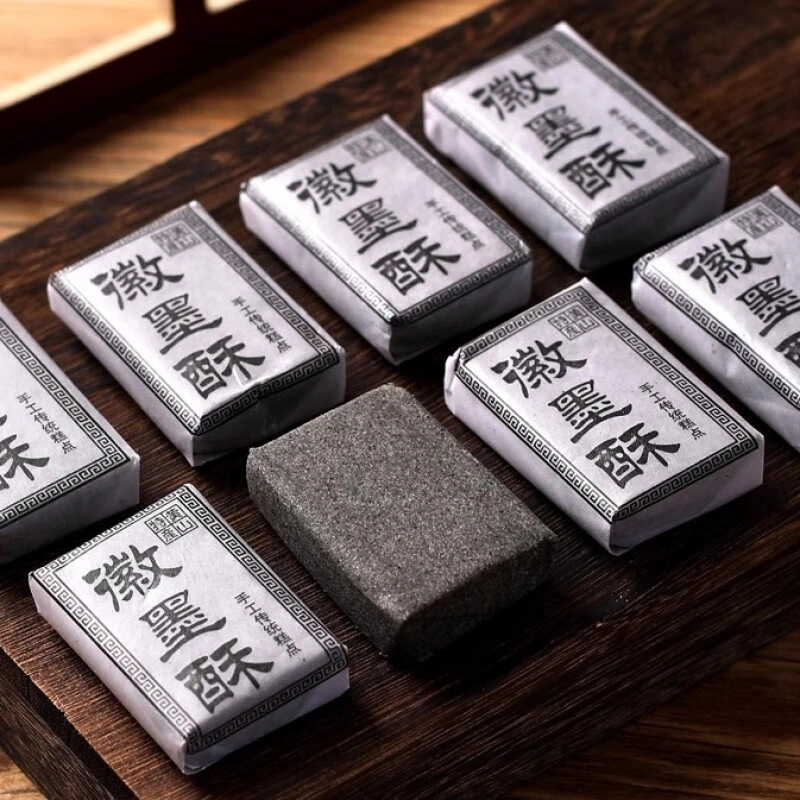The Art of Huizhou Ink Cake: A Culinary Journey Through Anhui’s Heritage
Introduction:
As a culinary practitioner, I am thrilled to delve into the intricacies of one of Anhui’s most cherished delicacies, the Huizhou Ink Cake, or “徽墨酥” in Chinese. This unique dessert is not only a testament to the region’s rich gastronomic culture but also a reflection of its historical and artistic legacy. Let’s embark on a sensory exploration of this非遗技艺 (intangible cultural heritage), which has been meticulously crafted for generations.
Origin and Cultural Background:
The Huizhou Ink Cake hails from the picturesque city of Huangshan in Anhui Province, an area steeped in history and renowned for its contributions to Chinese ink-making. The dessert’s name is a clever play on words, as “Hui” refers to Anhui and “ink” is a nod to the region’s famous ink production. The cake’s resemblance to a traditional ink cake used by scholars in ancient China adds a layer of cultural significance to this delightful treat.
Ingredients and Preparation:
The Huizhou Ink Cake is a labor of love, crafted with a select blend of high-quality ingredients. The main components include:
1. Wheat flour: This provides the base for the cake, ensuring a light and flaky texture.
2. Lard: Used for its rich flavor and ability to create a tender, flaky crust.
3. Sesame seeds: These are the star of the show, providing a nutty, aromatic filling that contrasts beautifully with the pastry.
4. Sugar: To sweeten the dessert and balance the flavors.
5. Various spices: To enhance the overall taste profile.
The process of making Huizhou Ink Cake is a delicate balance of art and science. The dough is prepared with precision, rolled thin, and then filled with a generous helping of sesame paste. The cake is then carefully shaped to resemble an ink cake, with a smooth, rounded top and a slightly pointed bottom.
Taste and Texture:
The Huizhou Ink Cake offers a symphony of flavors and textures. The pastry is crisp on the outside, yet tender and flaky within, melting in your mouth with each bite. The芝麻馅 (sesame filling) is rich and aromatic, with a slightly sweet and nutty taste that is both comforting and indulgent. The contrast between the pastry and the filling creates a harmonious balance that is truly satisfying.
Visual Description:
A Huizhou Ink Cake is a sight to behold. The outer crust is a golden brown, glistening with a hint of lard that has caramelized during baking. The cake’s shape is elegant and symmetrical, reminiscent of an ink cake used in ancient Chinese calligraphy. Each cake is a miniature work of art, with a smooth surface that is often imprinted with a traditional Chinese character, adding a touch of elegance and cultural depth.
Representative Dishes and Culinary Uses:
While the Huizhou Ink Cake is a dessert in its own right, it can also be incorporated into various other dishes. It is often served as a teatime treat, accompanying a cup of fragrant Chinese tea. The cake can also be used as a dessert component in a multi-course meal, providing a sweet conclusion to a savory feast.
Culinary Characteristics:
The Huizhou Ink Cake is characterized by its unique combination of traditional flavors and modern presentation. It represents the fusion of Anhui’s culinary heritage with its artistic and cultural identity. The cake’s production is a testament to the skill and craftsmanship of Anhui’s food artisans, who have passed down this非遗技艺 through generations.
Conclusion:
As a culinary practitioner, I am humbled by the opportunity to share the story of the Huizhou Ink Cake. This dessert is more than just a sweet treat; it is a bridge to Anhui’s past, a celebration of its culinary prowess, and a symbol of its cultural identity. The Huizhou Ink Cake is a culinary gem that deserves to be savored and cherished by food lovers around the world.
